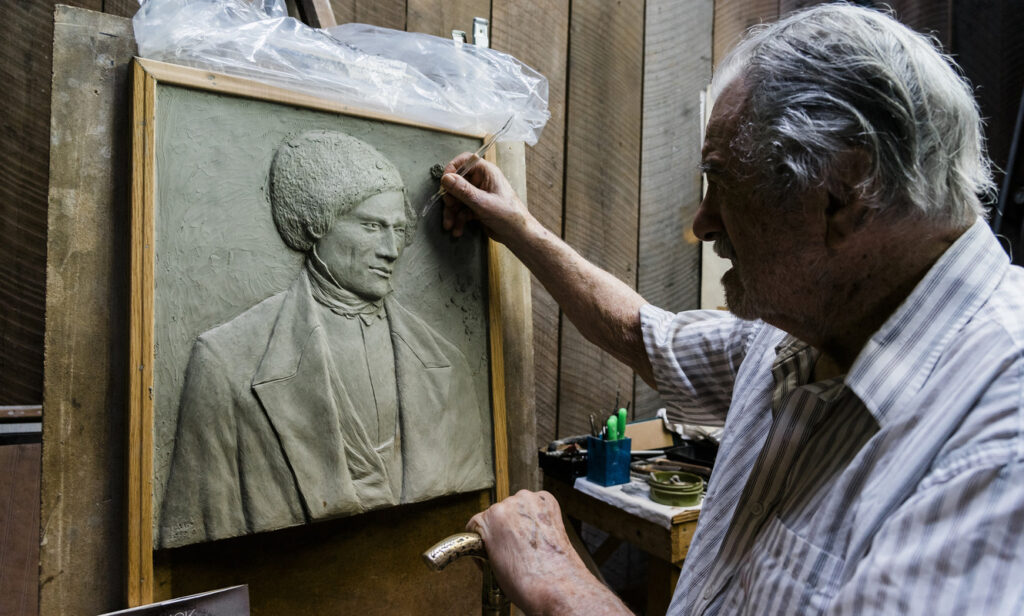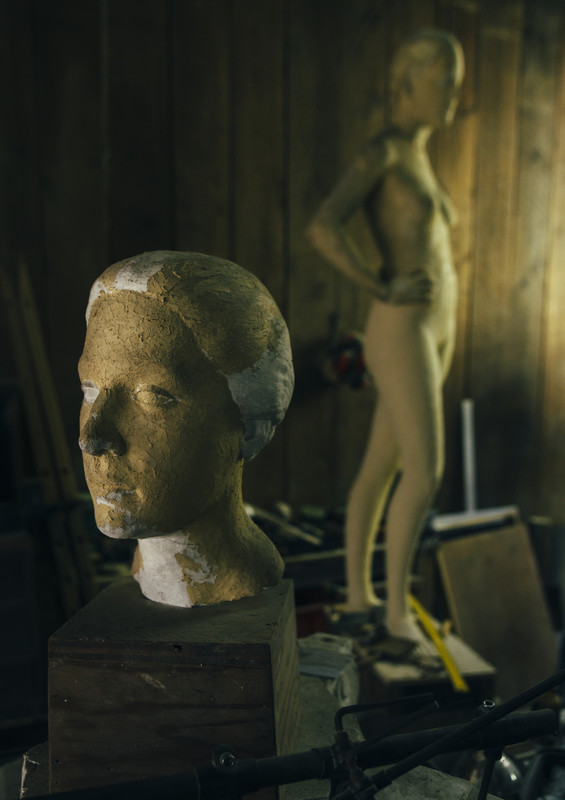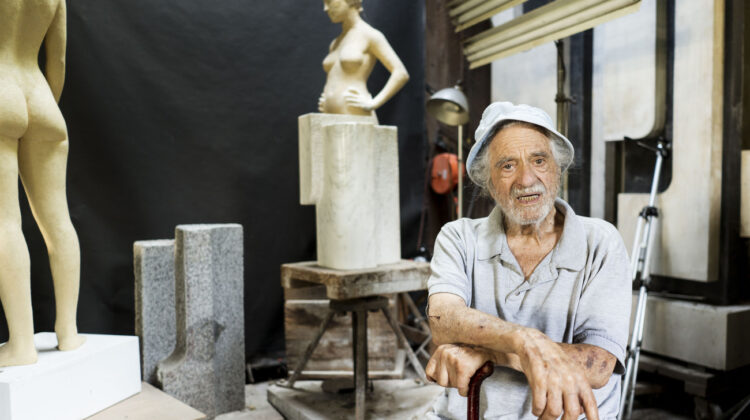Nahant lost an artistic treasure in April when sculptor Reno “Ray” Pisano died at the age of 101. The artist, who lived in town, continued to influence the culture of both Nahant and Lynn with his work even after becoming a centenarian.
The Lynn native discovered his passion for sculpting at the age of 12. Shortly after graduating from the School of the Museum of Fine Arts, Pisano became a teacher there himself. In 1970, he was one of the nine founding members of the Montserrat College of Art in Beverly. During his teaching career, he influenced other notable artists, such as Argentinian sculptor Carlos Dorrien.

State Sen. Brendan Crighton first became acquainted with Pisano while serving on the Lynn City Council. The councilors were looking to have a monument of Bud Fowler, the first African American professional baseball player who played his first game in Lynn, created.
“He had already done a number of plaques honoring different Lynn residents across the city,” Crighton said. “He was just such a community-centric guy.”
Another notable work of Pisano’s is the memorial statue of Frederick Douglass, which was first revealed at Douglass’ namesake park in Lynn in 2021.
“Ray was the obvious choice,” Crighton said.

Pisano also created statues of other notable figures from Lynn such as Mary Baker Eddy, the founder of the Church of Christ, Scientist; 19th-century painter Childe Hassam, and 19th-century inventor Lydia Pinkham.
Crighton said that Pisano always offered his services to Lynn at a “considerable discount.” Sometimes he provided his artwork for free, like when he donated his “Tectonic Eclipse” sculpture to the Nahant Public Library.
Pisano received a Significance Award from the Lynn Historical Commission in 2021, which recognized his “heart-felt devotion” to the city and its history through his artwork.
Just before his 100th birthday in 2022, Crighton and state Rep. Peter Capano presented Pisano with a state resolution in his home studio for his creative contributions. It was then when he
emphasized that the creation process has always been more enjoyable to him than any result, a reason why he kept practicing his passion virtually up until his death.
Despite his talent, Crighton said Pisano was always known for his humility.
“He never wanted to be in the limelight,” Crighton said.
Crighton recalled instances when Pisano would have to be convinced to take the podium and share his thoughts on his artwork. However, his humility often became most evident when he did speak.
“In all truth, in actuality, we are all cousins and I treat everybody like an old friend,” Pisano said in a speech after receiving the Significance Award.
In addition to serving his community through art, Pisano also served his country in the Army’s 51st Engineer Combat Battalion during World War II.
“He certainly lived a very full life, obviously a loss to the community,” Crighton said. “But he gave so much back throughout his lifetime that certainly will not be forgotten. A definite legacy to live on.”

